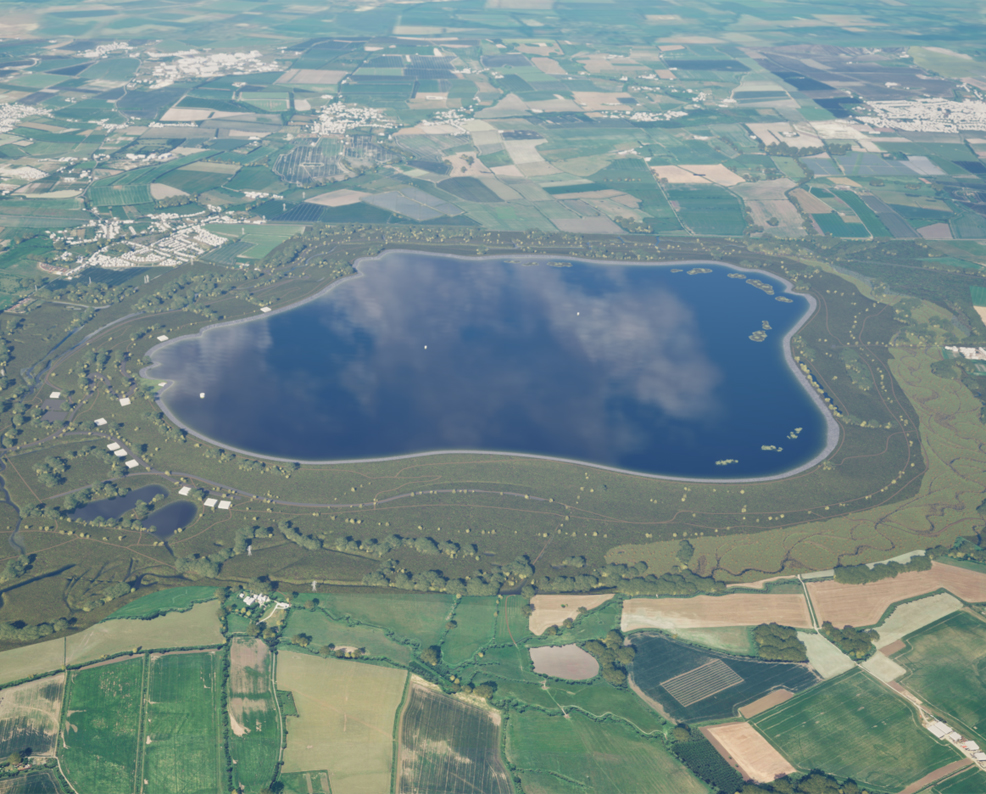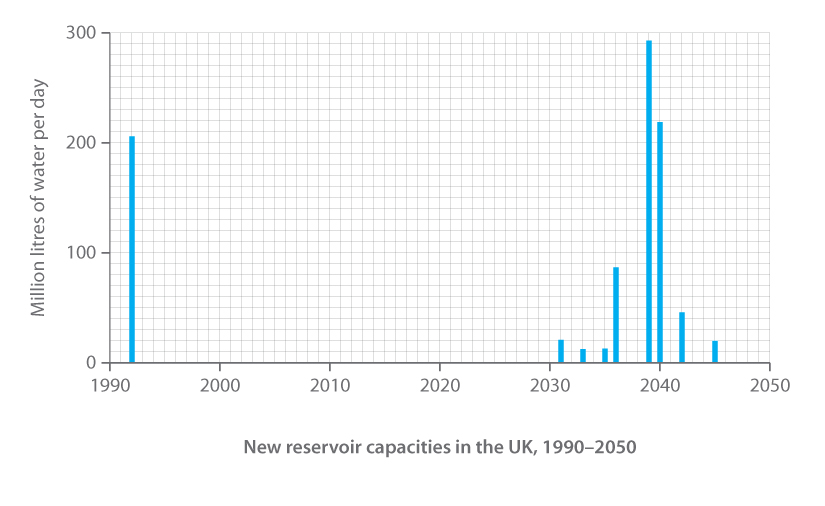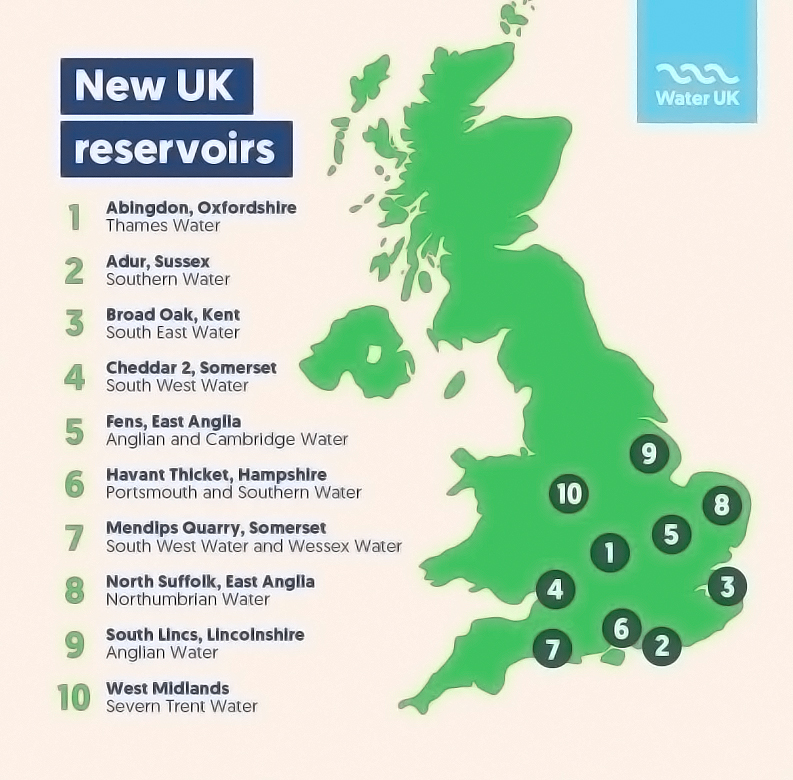
12th June 2025 UK reservoirs aim to ease water shortages by 2040 The UK is building its first major reservoirs since 1992, a key step in securing water supplies amid rising drought risks. The newly approved Fens and Lincolnshire projects are among 10 planned reservoirs aimed at boosting climate resilience.
The UK may have a reputation for cold, grey skies and persistent drizzle, but its weather is becoming increasingly unpredictable. Recent years have seen remarkable contrasts: in 2023, England recorded its driest February in three decades, immediately followed by the wettest March in 40 years. Spring 2025 became the warmest ever recorded – which included the driest March in more than 60 years – with rainfall 40% below average. Reservoir levels plunged to 77%, far below the usual 93% for the time of year, prompting drought declarations in northwest England. Far from isolated anomalies, these events reflect deeper shifts in the country's climate. Eight of the ten warmest UK springs have occurred since 2000, and the three warmest springs have all occurred since 2017, according to the Met Office. This growing volatility underscores mounting pressure on the UK's water resources. Utility companies in England and Wales currently supply about 14 billion litres of water per day for public use. But the Environment Agency warns that, without action, demand could exceed supply by nearly 5 billion litres each day by 2050 – a shortfall of more than one-third. Scientists now estimate a one-in-four chance of severe droughts by mid-century, which could mean households facing extended periods without running water. Rapid population growth and climate change are straining rivers and aquifers, especially in the drier south and east. No major reservoir has been built in the UK since 1992, when Carsington Water entered service in the Midlands. This decades-long pause – combined with aging infrastructure and warmer, drier summers – has left Britain increasingly vulnerable to drought and hosepipe bans. The summer of 2022 brought Europe's worst drought in 500 years and saw the UK exceed 40°C for the first time, turning huge areas of the country from green to brown.
Southwest England has avoided further droughts since 2022, but East Anglia remains vulnerable to dry spells, with depleted soil moisture recorded this spring. Northwest England, meanwhile, has recently entered official drought status. The UK government's National Drought Group has urged water companies to strengthen plans for future dry weather. With climate models projecting up to 5.1°C of warming by 2070 in the most extreme scenario, securing reliable water storage will be critical in the coming decades. In a landmark decision, the Department for Environment, Food and Rural Affairs (DEFRA) has now fast-tracked the construction of two major new reservoirs in eastern England – both designated as "nationally significant" projects. The Fens Reservoir (a joint project by Anglian and Cambridge Water) between Chatteris and March in Cambridgeshire aims to be operational by 2036, while Anglian Water's Lincolnshire Reservoir will be built near Sleaford and is scheduled for 2040. Together these two will supply water to over 750,000 homes in some of the UK's driest areas. The Lincolnshire Reservoir alone will provide up to 166 million litres per day (Ml/d) – enough for half a million people – and the Fens about 87 Ml/d for a quarter-million people. These projects have been under discussion for years, hampered by slow planning processes and local opposition, but now the government has intervened to expedite construction. "Today, we are backing the builders, not the blockers, intervening in the national interest and slashing red tape to make the planning process faster," said the UK Parliamentary Under-Secretary of State for Water and Flooding, Emma Hardy. "This Government will secure our water supply for future generations." The Fens and Lincolnshire reservoirs are just part of a broader nationwide effort. In total, 10 new reservoirs are currently planned by water companies across multiple regions, potentially adding nearly 700 million litres per day (Ml/d) of supply.
Notably, the South East Strategic Reservoir Option (SESRO) (pictured earlier) would be the UK's largest new reservoir. Planned by Thames Water in partnership with Affinity Water and Southern Water, its enormous volume will enable the storage of 150 billion litres, with about 293 Ml being released each day. If approved, this single reservoir would substantially bolster southern England's drought resilience, securing water for almost 900,000 more people. Although situated nearly 60 km (37 miles) from London, the SESRO could release water into the River Thames during dry periods for re-abstraction downstream, supporting the capital's water supply too. Greater London is the UK's fastest-growing region in absolute terms, making it particularly crucial to upgrade the existing water infrastructure and relieve pressure on resources. Water companies must overcome significant challenges to deliver these projects. One issue is public confidence. After decades of underinvestment, leaks, and mismanagement, England's privatised water firms have a poor reputation. Many residents ask: why build expensive new reservoirs when over 3 billion litres are being lost every day to pipe leaks (20% of supply)? Others recall that firms paid out billions in dividends while failing to invest in infrastructure. This distrust can fuel local opposition. There are also legitimate environmental concerns. New reservoirs mean flooding large areas of land – often farms, wetlands, or valleys – which can impact ecosystems and require relocating communities. Local activists in Oxfordshire fear the proposed 25-metre-high reservoir embankments of the SESRO and question its safety being so close to homes. Gaining planning permission has historically been slow and contentious. The government is now addressing this by designating reservoirs as Nationally Significant Infrastructure Projects (NSIPs), which moves approval to a higher level and streamlines the process. Ministers have pledged to legislate under the Labour Party's "Plan for Change" so that future large reservoirs automatically receive this designation, helping to avoid local bottlenecks. Not just new reservoirs: diversifying the UK's water future While new reservoirs are vital to the UK's water strategy, relying on them alone would be short-sighted. Equally important is reducing demand and waste. Government regulator Ofwat has challenged the sector to cut leakage rates by 17% before 2030. Water companies are now ramping up pipe repairs and have committed to reducing leakage by 50% from a 2017-18 baseline by 2050. Smart meters and efficiency campaigns, targeted at millions of households, aim to slash per-capita usage from 152 litres to just 110 litres per day by 2050, helping to protect the environment while also reducing bills. Desalination – turning saltwater into drinking water – is another tool, though currently a last resort. The UK's only major desalination facility, Thames Water's Beckton plant on the Thames estuary, can supply up to 100 Ml/d – about 5% of London's needs – but is extremely energy-intensive and expensive to run. In fact, it has been used only three times in 15 years of operation. While desalination offers a reliable backup (seawater is always available), its high power consumption and cost mean it's typically kept on standby. Nevertheless, technological improvements could make future desalination plants more viable, especially if powered by cheap and renewable energy. South East Water recently published its long-term plan for 2025 to 2075, which includes proposals for new desalination facilities in Kent – the most south-easterly county in England. Several other projects are on the horizon, with Anglian Water and Southern Water planning schemes along England's east and south coasts between 2040 and 2046. Together, these facilities could provide a combined total of around 233 Ml/d. As climate change worsens, coastal regions may increasingly consider these plants to bolster peak summer supply. Water regulator Ofwat is also backing broader innovations across the sector. Last month, its Water Breakthrough Challenge awarded more than £42 million for pioneering solutions – from leak-detecting satellites and water-quality drones, to AI-driven efficiency improvements. Following decades of inertia, the UK is finally taking the bold steps required to future-proof its water supply. The push to build 10 new reservoirs – including the now-approved Fens and Lincolnshire sites – signals a new era of water investment. These reservoirs, combined with aggressive leakage reductions, and possibly some desalination, aim to avert the scenario of taps running dry in the coming decades. If plans stay on track, the UK will have a more resilient water network by 2040, better able to withstand hotter summers and serve a growing population. This is a globally relevant effort, as countries everywhere face the same challenge. Combining infrastructure upgrades with demand reduction, technological innovation, and cooperative water management – both nationally and across borders – offers a viable path forward. Despite the looming threat of climate breakdown, cautious optimism is justified: collaboration and decisive steps taken today can help ensure water flows reliably for generations to come.
Comments »
If you enjoyed this article, please consider sharing it:
|
||||||










